O-Day - Bagel updates 15 Jun 2022
Fields passing through Corrugated iron sheet? Free maker of 3D 'natures donuts' and VEGA Bagel reactor progress
Henk Jurrien has been laying out a field assessment area in his barn
Early tests appear to show that the field penetrates corrugated iron roofing sheet.
‘Peter S.’ developed a free parametric ‘Natures donut’ builder
After developing the excellent parametric bagel builder using OpenSCAD. I asked Peter S. if he could develop a similar parametric 3D model builder for making the structures I had derived from LION and Hutchison samples and later found one Henk Jurrien’s VEGA Valley eastern plateau.
He duly obliged, however, due to limitations in OpenSCAD, he developed the beta tool in the free 3D software, Blender. Over a few days I worked with him, identifying errors in the output which he found workarounds for with the skill of an experienced programmer. I cannot thank him enough for his timely and professional approach.
Below is his video showing how to use the tool, it was with the beta, but there is no need to re-record it as the instructions are still valid. Link to software and code below.
It took a few minutes to download the Mac version of Blender and install it. Then I just clicked on the “Scripting” tab and after hitting “New” and pasting the code below, I was up and running. Below is a green clone of the one I published on 17th February 17th 2020, only, with Peters tool, it took just a few seconds to build this time!
NOTE: in these “natural donuts” the first level is actually a 2nd level with respect to the Zhvirblis/Nevessky paper and the overall structure above is a 1,2,3,4-tor. That being said, the smaller Tori here are fractals of the larger ones.
Code for the ‘natural donut maker’: https://pastebin.com/F0Q4swpK
import bpy
import bmesh
import math
'''
- Version 1: First release
- Version 2: Changed from Lattice deform to Mesh Deform due to some strange non linear characteristics
'''
clear_first = True # clearing all existing torus objects first
smoothing = 0 # set to 0 for default torus geometry, set to > 0 for subdivision multiple
# progressive radii of torus, radius_1 is the minor radius and radius_2 is major radius of first torus
radius_1 = 0.5
radius_2 = 2.0
radius_3 = 8.0
radius_4 = 32.0
radius_5 = 128.0
# pregressive number of sections on each torus (smallest to largest)
sections_1 = 32
sections_2 = 32
sections_3 = 32
# whether or not to stretch the outer edge of the torus to attempt to fill the parent torus volume (smallest to largest)
# be awre that using stretch on more than one level will result in non symetric torus on the lower levels.
stretch_1 = True
stretch_2 = True
stretch_3 = True
level = 4 # level of torus to render up to
from bpy import context
import builtins as __builtin__
def console_print(*args, **kwargs):
for a in context.screen.areas:
if a.type == 'CONSOLE':
c = {}
c['area'] = a
c['space_data'] = a.spaces.active
c['region'] = a.regions[-1]
c['window'] = context.window
c['screen'] = context.screen
s = " ".join([str(arg) for arg in args])
for line in s.split("\n"):
bpy.ops.console.scrollback_append(c, text=line)
def print(*args, **kwargs):
"""Console print() function."""
console_print(*args, **kwargs) # to py consoles
__builtin__.print(*args, **kwargs) # to system console
#bpy.ops.object.mode_set(mode='OBJECT')
bpy.ops.object.select_all(action='DESELECT')
if clear_first:
for obj in bpy.context.scene.objects:
if obj.name.startswith('Torus'):
bpy.data.objects.remove(obj, do_unlink = True)
#bpy.ops.object.select_all(action='SELECT')
#bpy.ops.object.delete(use_global=False, confirm=False)
#bpy.ops.mesh.primitive_uv_sphere_add(radius=radius_4, enter_editmode=False, align='WORLD', location=(0, 0, 0), scale=(1, 1, 1))
if level > 0:
# first torus level
bpy.ops.mesh.primitive_torus_add(align='WORLD', location=(0, 0, 0), rotation=(0, 0, 0), major_radius=radius_2-radius_1, minor_radius=radius_1, abso_major_rad=radius_2, abso_minor_rad=radius_1)
torus_1 = bpy.context.selected_objects[0]
if level > 1:
# second torus level
bpy.ops.transform.translate(value=(radius_3-radius_2, 0, 0), orient_axis_ortho='X', orient_type='GLOBAL', orient_matrix=((1, 0, 0), (0, 1, 0), (0, 0, 1)), orient_matrix_type='GLOBAL', constraint_axis=(True, False, False), mirror=False, use_proportional_edit=False, proportional_edit_falloff='SMOOTH', proportional_size=1, use_proportional_connected=False, use_proportional_projected=False)
bpy.ops.object.origin_set(type='ORIGIN_CURSOR', center='MEDIAN')
bpy.ops.mesh.primitive_uv_sphere_add(radius=1, enter_editmode=False, align='WORLD', location=(0, 0, 0), scale=(1, 1, 1))
origin_1 = bpy.context.selected_objects[0]
bpy.ops.mesh.primitive_cube_add(enter_editmode=False, align='WORLD', location=(radius_3/2, 0, 0), scale=(1,1,1))
bpy.ops.transform.resize(value=(radius_3/2, radius_2, radius_1), orient_type='GLOBAL', orient_matrix=((1, 0, 0), (0, 1, 0), (0, 0, 1)), orient_matrix_type='GLOBAL', constraint_axis=(True, False, False), mirror=False, use_proportional_edit=False, proportional_edit_falloff='SMOOTH', proportional_size=1, use_proportional_connected=False, use_proportional_projected=False)
lattice_1 = bpy.context.selected_objects[0]
# https://blender.stackexchange.com/questions/163855/how-to-subdivide-mesh-with-python-and-blender-2-8
bm = bmesh.new()
bm.from_mesh(lattice_1.data)
#bm = bmesh.from_edit_mesh(lattice_1.data)
edges_to_split = [edge for edge in bm.edges if edge.verts[0].co.z == -1 * edge.verts[1].co.z]
bmesh.ops.subdivide_edges(bm, edges=edges_to_split, cuts=1, use_grid_fill=True)
bm.to_mesh(lattice_1.data)
bm.free()
lattice_1.data.update()
#bmesh.update_edit_mesh(lattice_1.data)
if smoothing > 0:
modifier_subd = torus_1.modifiers.new("Subdivision", 'SUBSURF')
modifier_subd.levels = smoothing
modifier_latt = torus_1.modifiers.new("MeshDeform", 'MESH_DEFORM')
modifier_latt.object = lattice_1
modifier_latt.precision = 3
bpy.ops.object.select_all(action='DESELECT')
bpy.context.view_layer.objects.active = torus_1
torus_1.select_set(True)
bpy.ops.object.meshdeform_bind(modifier="MeshDeform")
bm = bmesh.new()
bm.from_mesh(lattice_1.data)
for p in bm.verts:
#print(p.co)
if p.co.x == -1.0:
p.co.z = 0.0
if stretch_1 and p.co.x == 1.0 and p.co.z != 0.0:
#print(math.cos((2*math.pi)/(sections_1*2)))
#print(radius_3*math.sin((2*math.pi)/(sections_1*2))/radius_1)
p.co.x = math.cos((2*math.pi)/(sections_1*2))
if p.co.z == 1.0:
p.co.z = radius_3*math.sin((2*math.pi)/(sections_1*2))/radius_1
if p.co.z == -1.0:
p.co.z = -radius_3*math.sin((2*math.pi)/(sections_1*2))/radius_1
bm.to_mesh(lattice_1.data)
bm.free()
lattice_1.data.update()
modifier_arr = torus_1.modifiers.new("Array", 'ARRAY')
modifier_arr.count = sections_1
modifier_arr.use_relative_offset = False
modifier_arr.use_constant_offset = True
modifier_arr.constant_offset_displace[0] = 0
modifier_arr.use_object_offset = True
modifier_arr.offset_object = origin_1
bpy.ops.object.select_all(action='DESELECT')
bpy.context.view_layer.objects.active = origin_1
origin_1.select_set(True)
bpy.ops.transform.rotate(value=(2*math.pi)/sections_1, orient_axis='Y', orient_type='GLOBAL', orient_matrix=((1, 0, 0), (0, 1, 0), (0, 0, 1)), orient_matrix_type='GLOBAL', constraint_axis=(False, True, False), mirror=False, use_proportional_edit=False, proportional_edit_falloff='SMOOTH', proportional_size=1, use_proportional_connected=False, use_proportional_projected=False)
bpy.ops.object.select_all(action='DESELECT')
context.view_layer.objects.active = torus_1
torus_1.select_set(True)
if smoothing > 0:
bpy.ops.object.modifier_apply(modifier="Subdivision")
bpy.ops.object.modifier_apply(modifier="MeshDeform")
bpy.ops.object.modifier_apply(modifier="Array")
bpy.ops.object.select_all(action='DESELECT')
context.view_layer.objects.active = lattice_1
lattice_1.select_set(True)
origin_1.select_set(True)
bpy.ops.object.delete(use_global=False, confirm=False)
if level > 2:
# third level torus
bpy.ops.mesh.primitive_uv_sphere_add(radius=1, enter_editmode=False, align='WORLD', location=(0, 0, 0), scale=(1, 1, 1))
origin_1 = bpy.context.selected_objects[0]
bpy.ops.object.select_all(action='DESELECT')
context.view_layer.objects.active = torus_1
torus_1.select_set(True)
bpy.ops.transform.translate(value=(radius_4-radius_3, 0, 0), orient_axis_ortho='X', orient_type='GLOBAL', orient_matrix=((1, 0, 0), (0, 1, 0), (0, 0, 1)), orient_matrix_type='GLOBAL', constraint_axis=(True, False, False), mirror=False, use_proportional_edit=False, proportional_edit_falloff='SMOOTH', proportional_size=1, use_proportional_connected=False, use_proportional_projected=False)
bpy.ops.object.origin_set(type='ORIGIN_CURSOR', center='MEDIAN')
bpy.ops.mesh.primitive_cube_add(enter_editmode=False, align='WORLD', location=(radius_4/2, 0, 0), scale=(1,1,1))
bpy.ops.transform.resize(value=(radius_4/2, radius_2, radius_3), orient_type='GLOBAL', orient_matrix=((1, 0, 0), (0, 1, 0), (0, 0, 1)), orient_matrix_type='GLOBAL', constraint_axis=(True, False, False), mirror=False, use_proportional_edit=False, proportional_edit_falloff='SMOOTH', proportional_size=1, use_proportional_connected=False, use_proportional_projected=False)
lattice_1 = bpy.context.selected_objects[0]
# https://blender.stackexchange.com/questions/163855/how-to-subdivide-mesh-with-python-and-blender-2-8
bm = bmesh.new()
bm.from_mesh(lattice_1.data)
#bm = bmesh.from_edit_mesh(lattice_1.data)
edges_to_split = [edge for edge in bm.edges if edge.verts[0].co.y == -1 * edge.verts[1].co.y]
bmesh.ops.subdivide_edges(bm, edges=edges_to_split, cuts=1, use_grid_fill=True)
bm.to_mesh(lattice_1.data)
bm.free()
lattice_1.data.update()
#bmesh.update_edit_mesh(lattice_1.data)
modifier_latt = torus_1.modifiers.new("MeshDeform", 'MESH_DEFORM')
modifier_latt.object = lattice_1
modifier_latt.precision = 3
bpy.ops.object.select_all(action='DESELECT')
bpy.context.view_layer.objects.active = torus_1
torus_1.select_set(True)
bpy.ops.object.meshdeform_bind(modifier="MeshDeform")
bm = bmesh.new()
bm.from_mesh(lattice_1.data)
for p in bm.verts:
print(p.co)
if p.co.x == -1.0:
p.co.y = 0.0
if stretch_2 and p.co.x == 1.0 and p.co.y != 0.0:
#print(math.cos((2*math.pi)/(sections_2*2)))
#print(radius_4*math.sin((2*math.pi)/(sections_2*2))/radius_2)
p.co.x = math.cos((2*math.pi)/(sections_2*2))
if p.co.y == 1.0:
p.co.y = radius_4*math.sin((2*math.pi)/(sections_2*2))/radius_2
if p.co.y == -1.0:
p.co.y = -radius_4*math.sin((2*math.pi)/(sections_2*2))/radius_2
bm.to_mesh(lattice_1.data)
bm.free()
lattice_1.data.update()
modifier_arr = torus_1.modifiers.new("Array", 'ARRAY')
modifier_arr.count = sections_2
modifier_arr.use_relative_offset = False
modifier_arr.use_constant_offset = True
modifier_arr.constant_offset_displace[0] = 0
modifier_arr.use_object_offset = True
modifier_arr.offset_object = origin_1
bpy.ops.object.select_all(action='DESELECT')
bpy.context.view_layer.objects.active = origin_1
origin_1.select_set(True)
bpy.ops.transform.rotate(value=(2*math.pi)/sections_2, orient_axis='Y', orient_type='GLOBAL', orient_matrix=((1, 0, 0), (0, 1, 0), (0, 0, 1)), orient_matrix_type='GLOBAL', constraint_axis=(False, False, True), mirror=False, use_proportional_edit=False, proportional_edit_falloff='SMOOTH', proportional_size=1, use_proportional_connected=False, use_proportional_projected=False)
bpy.ops.object.select_all(action='DESELECT')
context.view_layer.objects.active = torus_1
torus_1.select_set(True)
bpy.ops.object.modifier_apply(modifier="MeshDeform")
bpy.ops.object.modifier_apply(modifier="Array")
bpy.ops.object.select_all(action='DESELECT')
context.view_layer.objects.active = lattice_1
lattice_1.select_set(True)
origin_1.select_set(True)
bpy.ops.object.delete(use_global=False, confirm=False)
if level > 3:
# fourth level torus
bpy.ops.mesh.primitive_uv_sphere_add(radius=1, enter_editmode=False, align='WORLD', location=(0, 0, 0), scale=(1, 1, 1))
origin_1 = bpy.context.selected_objects[0]
bpy.ops.object.select_all(action='DESELECT')
context.view_layer.objects.active = torus_1
torus_1.select_set(True)
bpy.ops.transform.translate(value=(radius_5-radius_4, 0, 0), orient_axis_ortho='X', orient_type='GLOBAL', orient_matrix=((1, 0, 0), (0, 1, 0), (0, 0, 1)), orient_matrix_type='GLOBAL', constraint_axis=(True, False, False), mirror=False, use_proportional_edit=False, proportional_edit_falloff='SMOOTH', proportional_size=1, use_proportional_connected=False, use_proportional_projected=False)
bpy.ops.object.origin_set(type='ORIGIN_CURSOR', center='MEDIAN')
bpy.ops.mesh.primitive_cube_add(enter_editmode=False, align='WORLD', location=(radius_5/2, 0, 0), scale=(1,1,1))
bpy.ops.transform.resize(value=(radius_5/2, radius_4, radius_3), orient_type='GLOBAL', orient_matrix=((1, 0, 0), (0, 1, 0), (0, 0, 1)), orient_matrix_type='GLOBAL', constraint_axis=(True, False, False), mirror=False, use_proportional_edit=False, proportional_edit_falloff='SMOOTH', proportional_size=1, use_proportional_connected=False, use_proportional_projected=False)
lattice_1 = bpy.context.selected_objects[0]
# https://blender.stackexchange.com/questions/163855/how-to-subdivide-mesh-with-python-and-blender-2-8
bm = bmesh.new()
bm.from_mesh(lattice_1.data)
#bm = bmesh.from_edit_mesh(lattice_1.data)
edges_to_split = [edge for edge in bm.edges if edge.verts[0].co.z == -1 * edge.verts[1].co.z]
bmesh.ops.subdivide_edges(bm, edges=edges_to_split, cuts=1, use_grid_fill=True)
bm.to_mesh(lattice_1.data)
bm.free()
lattice_1.data.update()
#bmesh.update_edit_mesh(lattice_1.data)
modifier_latt = torus_1.modifiers.new("MeshDeform", 'MESH_DEFORM')
modifier_latt.object = lattice_1
modifier_latt.precision = 3
bpy.ops.object.select_all(action='DESELECT')
bpy.context.view_layer.objects.active = torus_1
torus_1.select_set(True)
bpy.ops.object.meshdeform_bind(modifier="MeshDeform")
bm = bmesh.new()
bm.from_mesh(lattice_1.data)
for p in bm.verts:
#print(p.co)
if p.co.x == -1.0:
p.co.z = 0.0
if stretch_3 and p.co.x == 1.0 and p.co.z != 0.0:
#print(math.cos((2*math.pi)/(sections_3*2)))
#print(radius_5*math.sin((2*math.pi)/(sections_3*2))/radius_3)
p.co.x = math.cos((2*math.pi)/(sections_3*2))
if p.co.z == 1.0:
p.co.z = radius_5*math.sin((2*math.pi)/(sections_3*2))/radius_3
if p.co.z == -1.0:
p.co.z = -radius_5*math.sin((2*math.pi)/(sections_3*2))/radius_3
bm.to_mesh(lattice_1.data)
bm.free()
lattice_1.data.update()
modifier_arr = torus_1.modifiers.new("Array", 'ARRAY')
modifier_arr.count = sections_3
modifier_arr.use_relative_offset = False
modifier_arr.use_constant_offset = True
modifier_arr.constant_offset_displace[0] = 0
modifier_arr.use_object_offset = True
modifier_arr.offset_object = origin_1
bpy.ops.object.select_all(action='DESELECT')
bpy.context.view_layer.objects.active = origin_1
origin_1.select_set(True)
bpy.ops.transform.rotate(value=(2*math.pi)/sections_3, orient_axis='Y', orient_type='GLOBAL', orient_matrix=((1, 0, 0), (0, 1, 0), (0, 0, 1)), orient_matrix_type='GLOBAL', constraint_axis=(False, True, False), mirror=False, use_proportional_edit=False, proportional_edit_falloff='SMOOTH', proportional_size=1, use_proportional_connected=False, use_proportional_projected=False)
bpy.ops.object.select_all(action='DESELECT')
context.view_layer.objects.active = torus_1
torus_1.select_set(True)
bpy.ops.object.modifier_apply(modifier="MeshDeform")
bpy.ops.object.modifier_apply(modifier="Array")
bpy.ops.object.select_all(action='DESELECT')
context.view_layer.objects.active = lattice_1
lattice_1.select_set(True)
origin_1.select_set(True)
bpy.ops.object.delete(use_global=False, confirm=False)
Thanks again to Peter S. for an outstanding contribution!
David Boutilier continues development of VEGA reactor designed to test Bagel configurations.
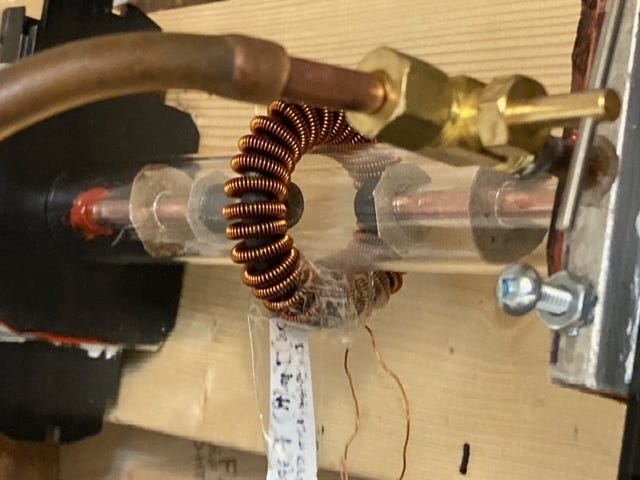
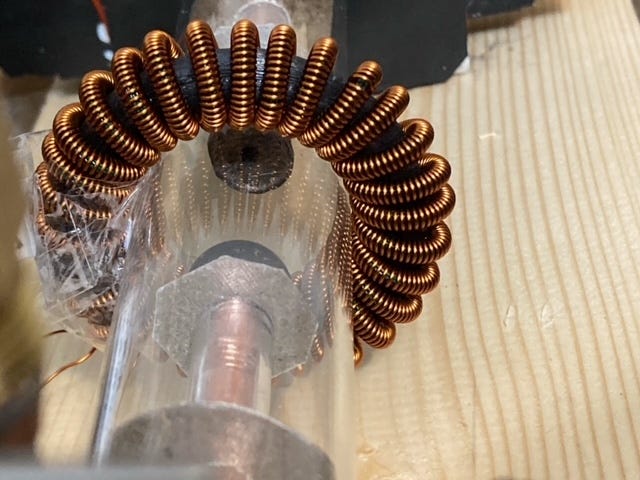
“I did test the vacuum out yesterday and although it's not perfect it is good enough to hold enough vacuum for experiments with the pump running for certain.” - Dave, 14 June, 2022
Russian Cold Nuclear Transmutation & Ball Lightning to make extra presentation of the season.
I updated as much as I could last Wednesday, the Russian community on latest developments. Well, following that - later today, this will be presented, which I will share as soon as possible…
"Resonances in the ether and their application"
F.S. Zaitsev, DSC, Professor, Academician of the Russian Academy of Natural Sciences,
S.M. Godin, engineer-physicist, equipment designer
The presentation gives the theory of the aether resonances. Such resonances, as the analysis showed, were used by N. Tesla and his followers in experiments with ball lightning. The results of applying the developed theory to LENR generation are described. The new LENR-R technology (R is from Resonances), implemented in the TNLT (Transformation of Nuclides at Low Temperature) installation, allows to obtain LENR at room temperature. A few minutes after the TNLT is turned on and with only ~10 W input to the reactor zone. The emission of cold and thermal neutrons or neutron-like objects of energies less than ~0.03 eV with intensity of ~10^6 [neutron/s] into the solid angle 4pi [sr] is observed, which is comparable to the intensity of industrial fast neutron sources.
The prospects of using the aetheric resonances in physics, medicine and economics are discussed."

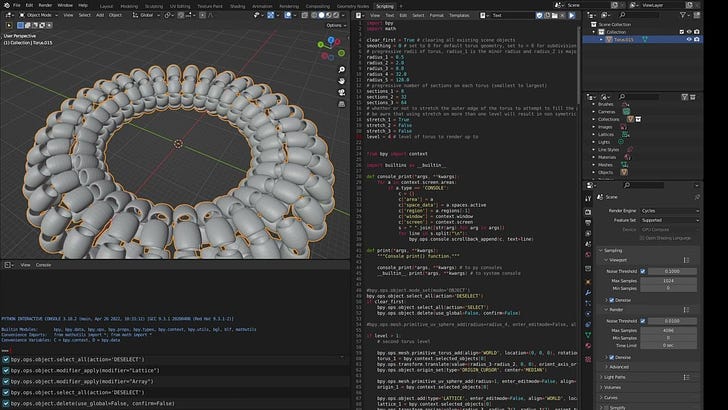

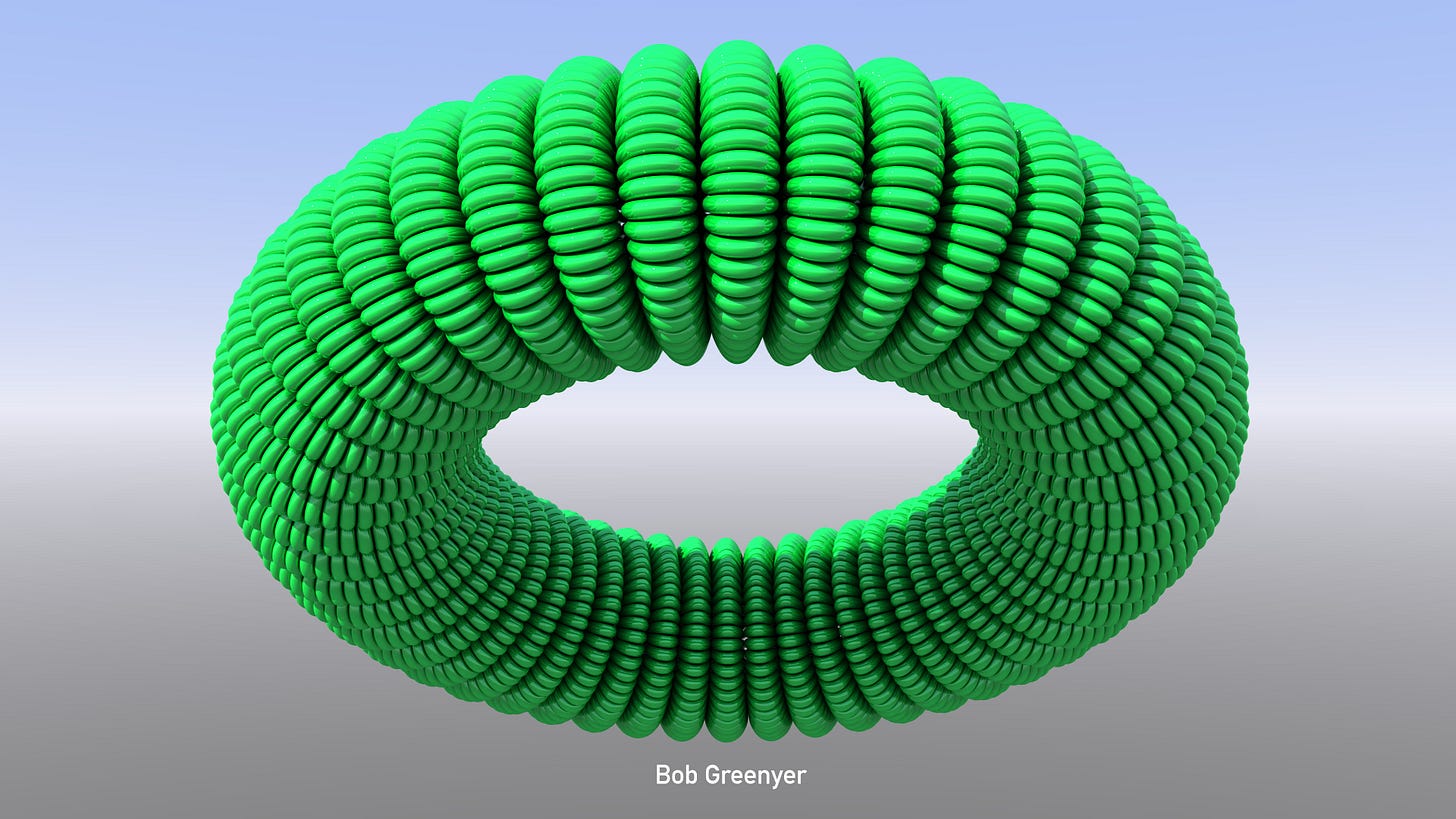
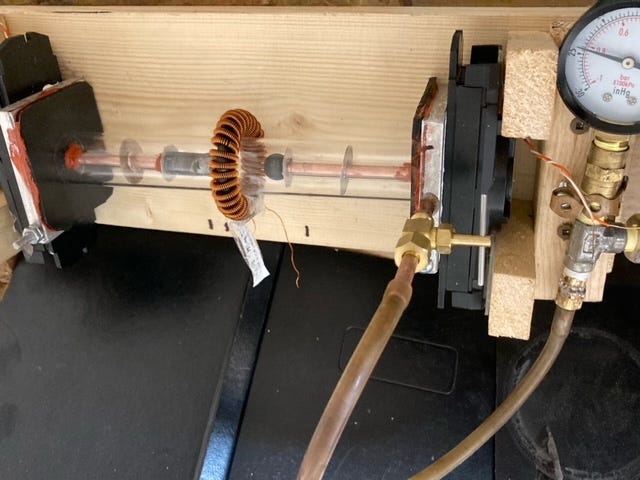
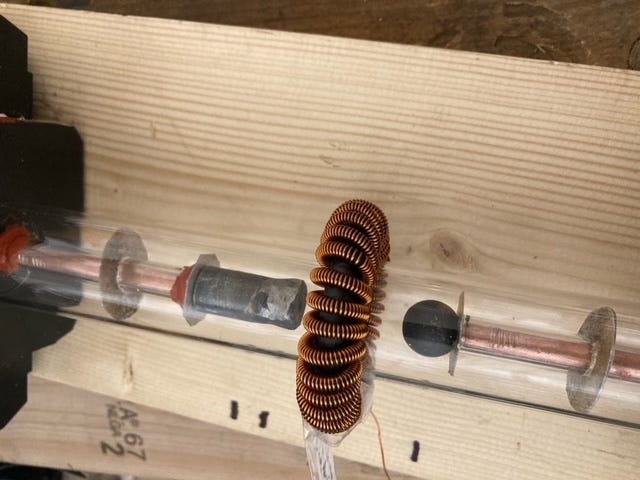
I saw a version of the following video https://m.youtube.com/watch?v=bHIhgxav9LY that was posted after it caused a lot of buzz, I think it has some importance for the understanding of how the bagels work.
Hey Bob,
Was watching some channeled videos today and one part I thought I'de pass along. Not because it includes any innate wisdom just because I like corroboration, even if it is from academic sources. This seemed like pretty good corroboration I provided the portion of the transcript from the video for context below (there's some slightly unrelated stuff In the transcript I pasted towards the end, but I found it interesting as it relates to the Mandela effect).
What she describes is the connection and nesting of torroidal fields as being the fields that underlie the "density" we inhabit and interconnect with all other fields. I found it very interesting how this connects back to the potential Mandela effect which I have been witnessing greatly as of late.
The more youtube forces me to watch Dan Winter, the more I'm starting to feel that the magnetic flux tunnels that the torroidal EVO's are following are probably precisely what Dan says, a matrix of (scalar?) energy lines. Numerous researchers have claimed there is some super-luminal element to the this network but I have no way to know how or why they claim this beyond equations that don't make sense to me ;).
https://youtu.be/xxESP5uV1IM?t=2644
44:04 um now in the ether and in that energy field nothing is separated
44:10 it's all connected and nothing is isolated everything from a single particle to
44:17 galaxies complete galaxies are toroids toroidal fields that interact <--- THIS PART HERE
44:24 with other fields and other fields and other fields on top of other fields
44:30 so how can you just insert an isolated object uh so you you can't and it is explained
44:38 that uh as everything is inter related those
44:45 energy energy values uh are always always interrelated with the energy
44:50 values of the next objects and the next situation
44:55 for that reason the cause the cause
45:01 and the prior dynamic before the appearance of that object must be must
45:06 appear because nothing just appears out of nothing out of nowhere it has to have its
45:12 justification in the matrix field and its proper dynamic why it's there the
45:18 the previous dynamic of why it appeared there and uh
45:24 this is this is super interesting and super important and because i remember one time long time ago we we asked like
45:32 okay can you insert me a ticket to hawaii for example and i remember svarup era that was a
45:39 long time ago she said well i can't do that without inserting the whole chain
45:45 of events that led to why that ticket is on your table so uh you know the passenger
45:53 you you have a passenger a seat a reserved uh you know why this seat and
45:58 uh you know um who organized that ticket who bought that ticket why that ticket was bought
46:06 what airline so the it it it creates like a shockwave in the matrix if you insert something
46:13 like that and creates the whole dynamic around it and the interesting and super mysterious
46:18 thing here is that that dynamic around it appears by itself sometimes it's not
46:26 like that they have to insert that sometimes all they have to do is just drop the
46:31 object into the matrix and the matrix the energy field of the matrix any material matrix
46:38 will create the dynamic interactions
46:43 around that object including memories of people will appear
46:50 someone will actually remember selling me the ticket at the office
46:55 that's why this technology is so they have to be careful with that because it can be kind of invasive
47:02 because okay that that matrix creates uh the justification around that object
47:08 by itself and they call they it absorbs that object that object and create they
47:15 create the whole uh result around it
47:21 like i said even memories will appear people having memories of
47:27 having bought that object somewhere those memories